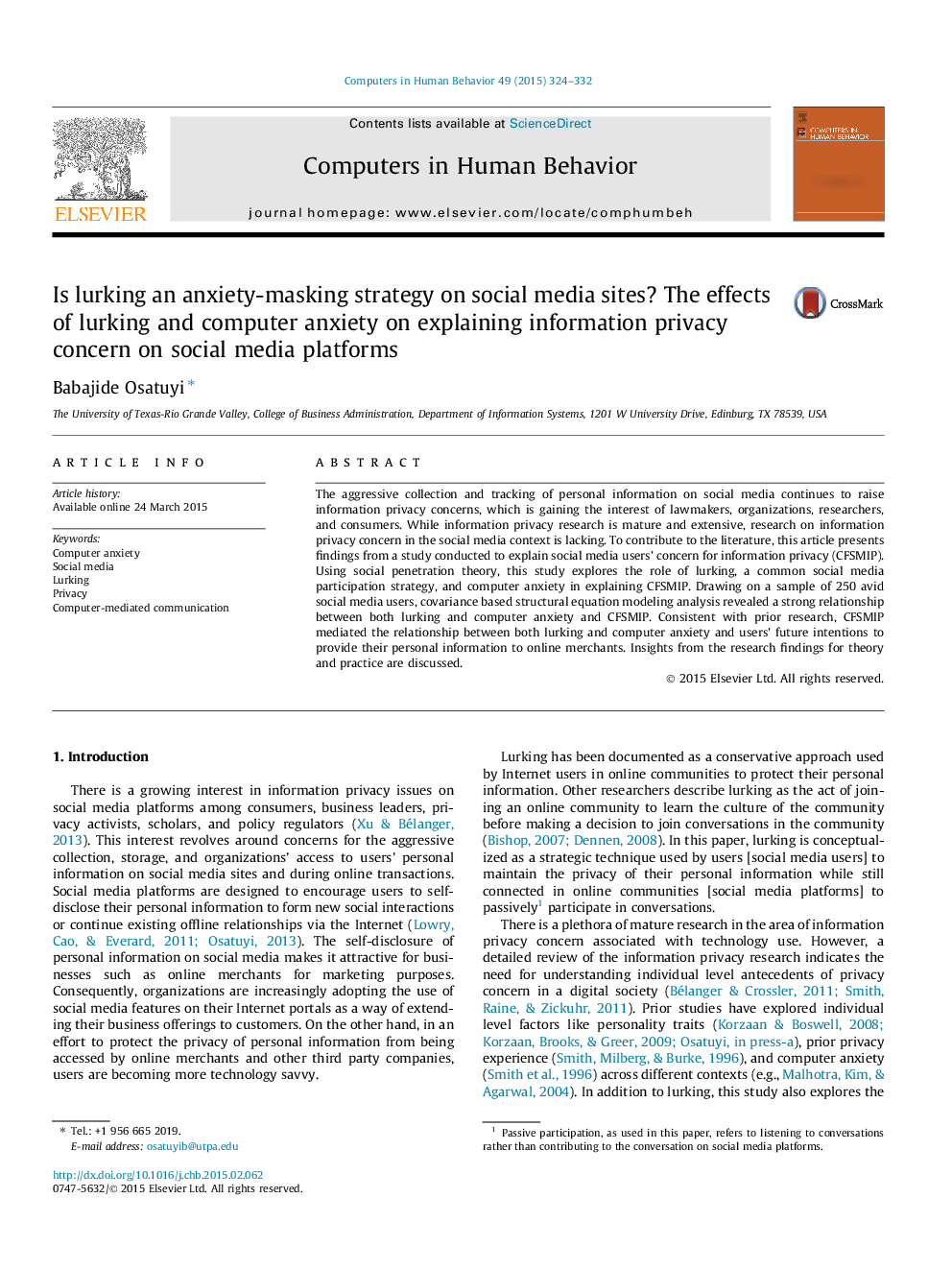| Article ID | Journal | Published Year | Pages | File Type |
|---|---|---|---|---|
| 350332 | Computers in Human Behavior | 2015 | 9 Pages |
•As users’ lurking tendency increases their CFSMIP (concern for social media information privacy) decreases.•As users’ computer anxiety increases, their tendency to lurk increases.•As users’ computer anxiety increases, their CFSMIP increases.•CFSMIP mediated the relationship between lurking and behavioral intentions.•CFSMIP mediated the relationship between computer anxiety and behavioral intentions.
The aggressive collection and tracking of personal information on social media continues to raise information privacy concerns, which is gaining the interest of lawmakers, organizations, researchers, and consumers. While information privacy research is mature and extensive, research on information privacy concern in the social media context is lacking. To contribute to the literature, this article presents findings from a study conducted to explain social media users’ concern for information privacy (CFSMIP). Using social penetration theory, this study explores the role of lurking, a common social media participation strategy, and computer anxiety in explaining CFSMIP. Drawing on a sample of 250 avid social media users, covariance based structural equation modeling analysis revealed a strong relationship between both lurking and computer anxiety and CFSMIP. Consistent with prior research, CFSMIP mediated the relationship between both lurking and computer anxiety and users’ future intentions to provide their personal information to online merchants. Insights from the research findings for theory and practice are discussed.
